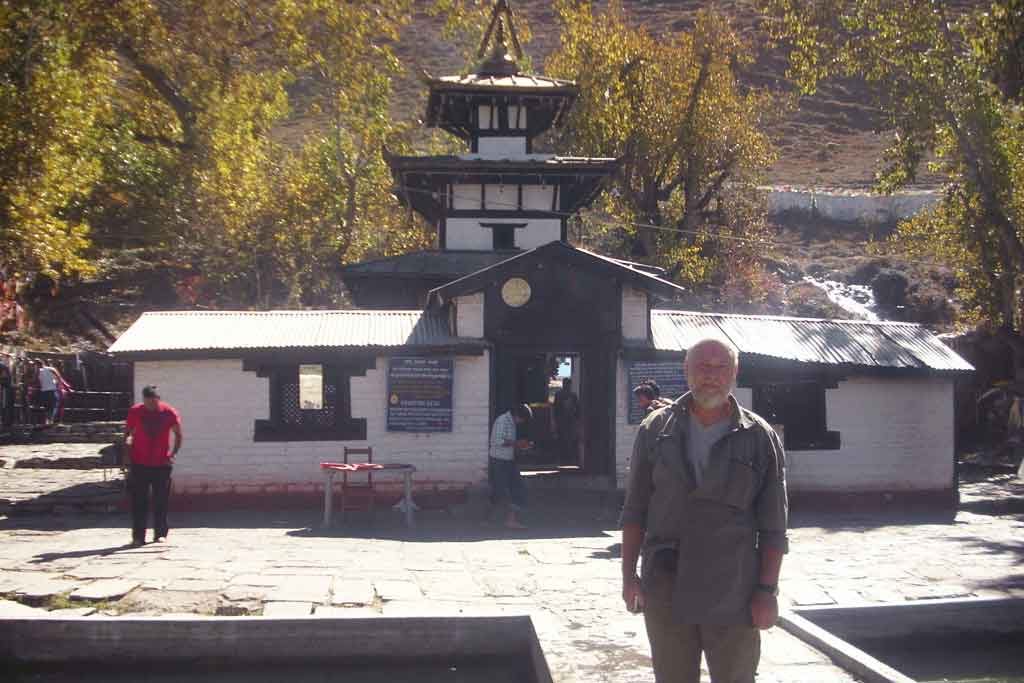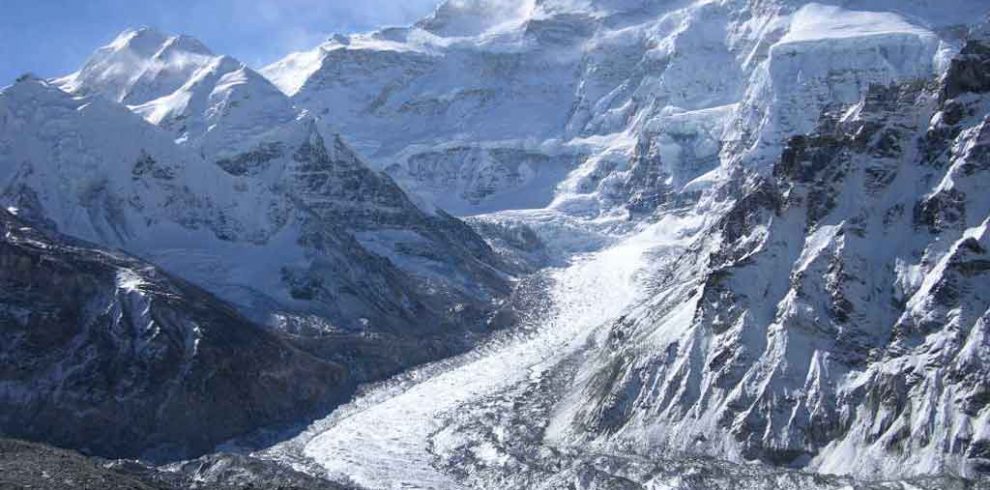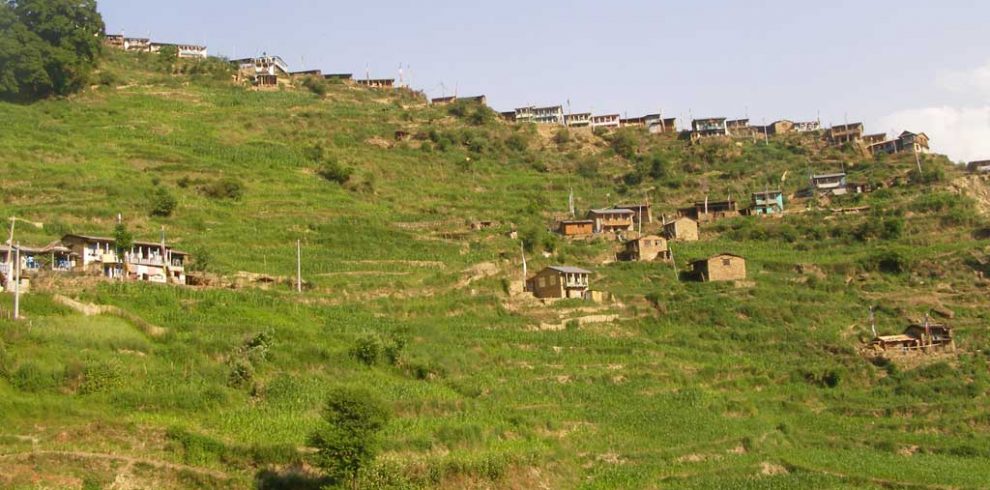Jomsom Muktinath trek is a classic route that goes along the world’s deepest gorge of the Kali Gandaki River in the Annapurna region of Nepal. Anyone with a moderate level of fitness can do this trek and the maximum elevation to reach is at 3,760 meters in Muktinath. Muktinath Temple has become a popular pilgrimage destination among Hindus of India after the Indian Prime Minister Narendra Modi paid a homage in 2018.
We fly early morning from Pokhara to Jomsom and start our trek on the Tibetan Plateau and arrive at Kagbeni. Kagbeni serves as the gateway to the ‘Forbidden Kingdom of Mustang’ also known as ‘Upper Mustang’. The next day we trek to Muktinath, a popular and sacred place for Hindu and Buddhist pilgrims. The temple has 108 water taps emerging from sacred water springs for religious bath.
Alternatively, Muktinath Darshan by Jeep is another way to visit Muktinath. Similarly, Muktinath Yatra by Helicopter is an ideal trip to the luxury travellers.
Brief Itinerary:
| Day | Route | Altitude | Duration |
|---|---|---|---|
| 01 | Drive/fly Kathmandu to Pokhara | 884m/2,900ft | Drive: 6-7 hrs Fly: 30 minutes |
| 02 | Fly Pokhara to Jomsom, trek to Kagbeni | 2,800m/9,186ft | Fly: 20 minutes Trek: 2-3 hours |
| 03 | Trek Kagbeni to Muktinath | 3,760m/12,336ft | Trek: 3-4 hrs |
| 04 | Trek Muktinath to Marpha | 2,670m/8,760ft | Trek: 6-7 hrs |
| 05 | Trek Marpha to Ghasa | 2,010m/6,594ft | Trek: 6-7 hrs |
| 06 | Trek Ghasa to Tatopani | 1,190m/3,905ft | Trek: 3-4 hrs |
| 07 | Trek Tatopani to Shikha | 1,935m/6,348ft | Trek: 4-5 hrs |
| 08 | Trek Shikha to Ghorepani | 2,860m/9,383ft | Trek: 3-4 hrs |
| 09 | Trek Ghorepani to Tikhedhunga via Poonhill | 3,210m/10,532ft | Trek: 5-6 hrs |
| 10 | Trek to Nayapul, drive back to Pokhara | 884m/2,900ft | Trek: 3-4 hrs Drive: 1 hour |
| 11 | Drive/fly Pokhara to Kathmandu | 1,350m/4,430ft | Drive: 6-7 hrs Fly: 30 minutes |
Some major attractions of Jomsom Muktinath trek include typical Mustang villages, hundreds of years old monastery, caves, local tribes and scenic landscapes. The tree-less barren landscape, a steep rocky trail up and down hill with panoramic views of Nilgiri, Annapurna, Dhaulagiri and several other peaks will add some adventures on this trek.
Tatopani is also popular for its natural hot water spring. There is a strong belief to cure many skin allergies due to the minerals present in it. Poonhill is yet another attraction of Jomsom-Muktinath trekking route for panoramic views of the snow-capped mountains. Sunrise at Poonhill is one of the important highlights of Jomsom Muktinath trek.
Is there alternative trekking route available from Tatopani to Jomsom?
The traditional route of Jomsom Muktinath trek is now replaced by motorable roads from Muktinath to Tatopani. The road between Jomsom to Tatopani becomes dusty and can result irritation to the trekkers. So, there is an alternative off-the-beaten trail available parallel to the road across the Kaligandaki River for interested trekkers.
Likewise, the Pokhara to Jomsom flight can be avoided and road journey can be chosen between Tatopani to Jomsom or Muktinath. Once reaching at the Muktinath Temple, we can trek back to Tatopani via the less travelled alternative route. However, it meets the main trail at several points. This unexplored trail also offers the unmatched Himalayan panorama.
From Muktinath, the alternative trekking trail passes through the main villages of Lupra, Thinigaon, Chhairo, Sirkung, Titi, Kunjo, Gadpar, Narchyang and finally joins at Tatopani. The trail offers the breathtaking views of the striking Dhaulagiri, Tukuche and Annapurna peaks. However, the facilities available are basic and seasonal. Please Contact Us for Jomsom Muktinath trek itinerary via the alternative route.
Best time for Jomsom Muktinath Trek
- High Season: March to May and September to November are the best seasons for Jomsom Muktinath trek. The spring is a blooming time and the autumn has a clear sky just after the monsoon.
- Low Season: It is possible to trek in December despite some cold and June is still favourable before the monsoon arrives.
- Off Season: The Jomsom to Muktinath section may remain closed due to snowfall in January-February; while the lower section between Tatopani to Jomsom might be affected by the landslide and summer flood in July-August.
Interested to explore more in the area? Then Upper Mustang Lo Manthang Trek would be the right option.
Overview
- Scenic mountain flight from Pokhara to Jomsom
- Views of plateau like in Tibet
- The panoramic views of the Annapurna Himalayan range
- The pilgrimage site of Muktinath Temple and the eternal flame
- The stone Vishnu (Shaligram) available on the Kaligandaki River valley
- Monasteries in Tukuche, Marpha, Kagbeni, Jharkot and Muktinath
- Great view of the Dhaulagiri Ice-fall
- The world’s deepest Kaligandaki gorge
- The natural hot spring pond at Tatopani
- Impressive Sunrise views from Poonhill











